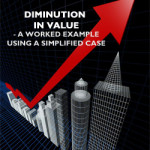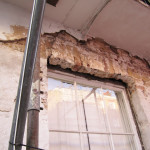Dispute Resolution: A review of the RICS Dilapidations Scheme for Expert Determination (This article first appeared in the Journal of Building Survey, Appraisal & Valuation Volume 3 Number 4 Dated November 2014) ABSTRACT The RICS announced the setting up of a new initiative for resolving dilapidations disputes by expert determination at the Dilapidations Conference in September […]
Diminution Valuation Simplified
This is about how a diminution valuation simplified using an imaginary claim with only one effective difference between the parties. A pdf of the full article can be downloaded from here, or by clicking the image; A landlord claims against a tenant in dilapidations. The building surveyors agree everything at the Contractual Claim level, but […]
Tenant Guide to Landlord Disrepair Claims
The expiry of a lease presents a landlord with the possibility of an income void lasting many months, which has an even greater impact in a difficult lettings market. It is unsurprising, therefore, that unscrupulous landlords sometimes regard a terminal dilapidations claim as a means of offsetting the leaner times ahead. What can a tenant […]
Must a tenant remove tenant’s fixtures?
Battles about Chattels Part 4 of 4 Chattels – The General Rule Nearly every lease has an express covenant by the tenant to yield up possession at the end of the term. Even if there is no express covenant, there will be an implied obligation to deliver up vacant possession when the lease ends. This […]
Dilapidations Settlements – Do’s and don’ts
Where proceedings are issued but the claim reaches a dilapidations settlement beforehand, the lawyers will usually deal with the documentation of the settlement. However, the vast majority of dilaps claims settle without the need for court proceedings and the surveyors document the agreements. The following is a checklist for those situations: Do set out the […]
Common Law Damages and the Statutory Cap
At the end of the term, a landlord may find that he has a damages claim against the departed tenant. It has been conventional to differentiate between the common law measure of damages and the statutory cap on those damages.[1] The Basic Common Law Measure At common law, damages comprised COST OF – BETTERMENT […]





